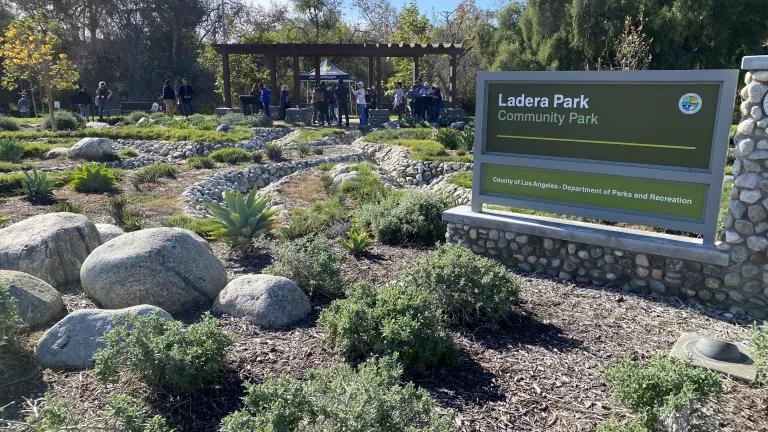Today the State Water Board put their faith, and our fate, in the hands of California water suppliers when they adopted a new framework for emergency conservation regulations that allows water suppliers—the same ones that have been arguing against conservation mandates—to determine their own water conservation targets based on local supply conditions and historical demand. While the new framework was slightly strengthened by the addition of recommendations from NRDC and our partners California Coastkeeper and Pacific Institute, the move from targets allocated by the State Board to ones determined by water suppliers could be a dangerous move and sends a confusing and inaccurate message about the status of the drought.
Despite recent achievements in conservation, and they have been outstanding, there continues to be a large and growing gap between the water that is desired and that made available by nature. Although we saw near average precipitation this winter, and are in a moderately better position than we were last year, nearly 72% percent of the state remains in severe to exceptional drought conditions and snowpack is only a third of average for this time of year. In addition, the National Oceanic and Atmospheric Administration (NOAA) reports there is a 71% chance of La Niña conditions this winter, which can mean a drier-than-normal winter. What’s more, all seven components of the latest North American Multi-Model Ensemble (NMME) show a dry start for California’s next rainy season. All of this makes a compelling case for not relaxing conservation standards as we head into the hottest, driest, and highest water using season of the year.
In addition to much of the state still experiencing drought conditions, California is also experiencing a large water-supply deficit.[1] To cut that deficit, California would need to experience several more winters wetter than this one. Without continued mandatory conservation measures, California will not get rid of the deficit and secure its water supply, but will instead place the state in a very vulnerable supply position going into a predicated dry La Niña year. At the very least, given the water-supply deficit, mandatory conservation measures should have continued until our state’s supply and demand are brought back into balance.
Look, I am sympathetic to the diverse supply conditions throughout the state and how difficult it has been for the Board to fairly and equitably implement mandatory conservation targets, but I am not convinced that the “voluntary” mandatory conservation targets developed under a self-certification framework is the way to go for several reasons.
- I’m doubtful that State Water Board staff has the capacity to adequately review and verify the 411 self-certification forms and underlying analysis relied upon by the supplier to determine a conservation standard.
- Throughout the emergency regulation public process, some water suppliers have noted or alluded to a desire to sell more water and I’m concerned how this will influence the development of self-determined, self-certified conservation targets. And it’s not just me. Last week Fitch Ratings, the agency that provides credit ratings for water utilities in California, noted in a press release issued just last week that the self-certification would likely result in a "quick rise" in sales.
- Self-certification allows for the possibility that more than one supplier will count the same supply, resulting in the aggregate projected supply among suppliers in a region exceeding the supply that is actually available.
- There is a possibility that water suppliers may simply overestimate projected supplies.
- Although water suppliers will be required to meet the conservation targets identified in self-certification forms, allowing water suppliers to develop them on their own makes them inherently voluntary. Historically, voluntary conservation has not been effective, in 2014 voluntary calls for a 20% reduction in demand resulted in only 8% savings.
Water suppliers say the move toward regulations that allow conservation targets to reflect local water supply conditions will help combat the drought fatigue that their customers may be feeling, but today’s hearing seemed to demonstrate that the State Board is suffering from the most severe case. Meanwhile, a recent field poll shows that the vast majority of California voters (86%) say that they intend to reduce their own water usage on a permanent basis, even after the current drought ends—and hopefully will do so despite today’s poor Board decision.
[1] Ed Joyce, California Drought: Too Soon To End Mandatory Conservation?, (May 11, 2016), available at http://www.capradio.org/72747.



